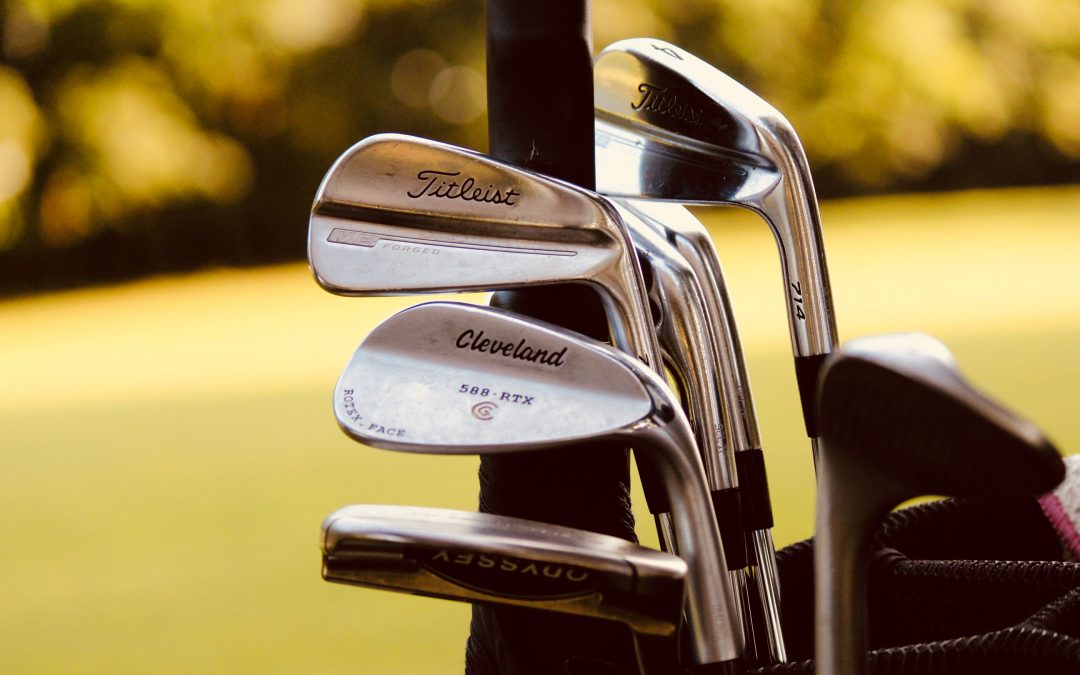It’s fairly rare that golfers will show up with exactly the same club selection. Differences in playing style will often make themselves known in the contents of a golf bag. However, there are some clubs that almost never see use, whether because they are difficult to use, redundant, or don’t adhere to modern club specifications.
Obsolete and Uncommon clubs – The 1-Iron
The 1-wood is an extremely popular, almost ubiquitous club, as are the mid and short irons (5-7 and 8-9). So the 1-iron must also see common use, right? Well, there’s a reason that the 1-wood is called simply “the driver” while the 1-iron is called many things, most of them unprintable.
The long irons (2-4) are awkward clubs. Their low loft and small striking areas tend to make them less popular compared to fairway woods of similar yardage. Therefore when it comes to picking one of these redundant clubs for their bag of 14, most golfers will go with fairway woods. The 1-iron is especially troublesome with its tiny head and low loftage. On top of all that, it still provides less yardage than a wooden driver.
While some golfers do use the 1-iron – and the flight pattern it gives could potentially be an edge on especially windy courses, since the ball tends to be close to the ground – it is certainly very uncommon. Some manufacturers have even ceased to produce the 1-iron. The opinion of the majority of golfers is probably best summed up by the great Lee Travino. After being hit by a bolt of lightning, he declared that if a storm brewed near him again, he would simply brandish a 1-iron at it, since in his own words “even God can’t hit a 1-iron”.
Obsolete and Uncommon Clubs – The 9-Wood
On the flipside of the 1-iron is the 9-wood. Where the 1-iron is difficult to use, the 9-wood tends to be very beginner-friendly on the account of its large striking surface and decent loft. This means that the 9-wood can be used to close in on the green even through rough consistently. However, once a player develops beyond a certain level, the 9-wood is inferior to the short irons.
Short irons can do a similar job, but better, simply requiring a somewhat higher skill level. The 9-wood is simply not as accurate as the 9-iron. Therefore once a player’s consistency reaches the point where they can comfortably use the 9-iron it makes the 9-wood redundant in many situations.
That’s not to say that it’s completely useless. The 9-wood saw some play as recently as last year where it was used to surge through a mess of rough. But in general it’s simply a rarely used club at a higher level, even if it has more utility than the 1-iron.
Obsolete and Uncommon Clubs – Scoops, Clippers, and Sabbath Sticks, Oh My.
But these clubs are the ones that are still used today. There are several designs that are not used at all. Most of these are banned designs. In 1928 Edwin McClain tried to invent a scooplike club designed to pluck balls out of bunkers. But it was prohibited out of fear that the sport would devolve into cross-country lacrosse. The sand wedge was eventually developed for the same purpose.
Many “clipper” clubs can be used officially. They are essentially a modified putter with a higher loft used to try and score holes from the rough instead of the putting green. These do see some use. However, any clipper clubs that use putter-only exemptions, such as multiple surfaces, are strictly prohibited.
But possibly the most humorous obsolete club is the sabbath stick. In Scotland the game of golf was briefly prohibited on Sundays for fear that the sport was too much of a temptation for churchgoers. The Sabbath stick was a club with a shrunken head that could fit easily into a golfer’s hand. A golfer could get some practice in (presumably in the long grass to hide the ball). Then they could quickly conceal the head and pretend to be out and about with a walking stick.


Recent Comments